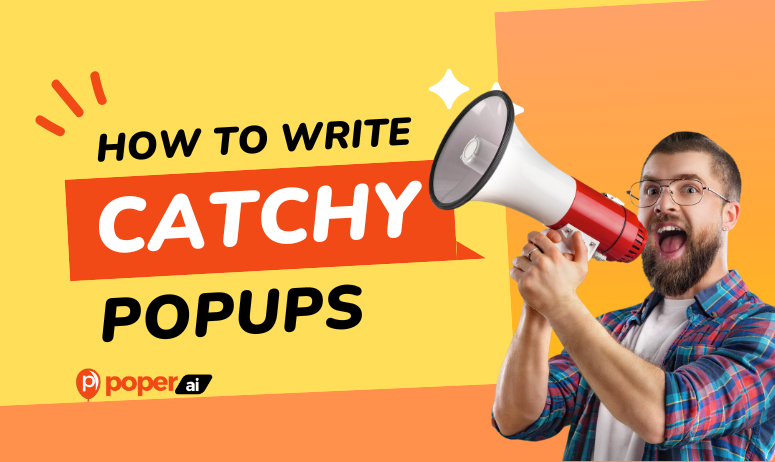Good copywriting is not just about making sales; it's about creating a conversation that leads to a relationship.
In today’s digital landscape, popup copywriting has emerged as a crucial element of effective marketing strategies. But what exactly is popup copywriting? Simply put, it refers to the text used in popup windows that appear on websites, designed to capture user attention and drive actions, such as email subscriptions or product purchases.
What Are Popup Copywriting and Its Importance? 💡
Popup copywriting serves as a powerful tool to engage visitors while they navigate your website. The words chosen can significantly influence user behavior, turning casual browsers into committed customers. Strategic copy not only increases conversion rates but also enhances user experience, as a well-crafted message resonates with the audience’s needs.
Understanding Your Audience 👥
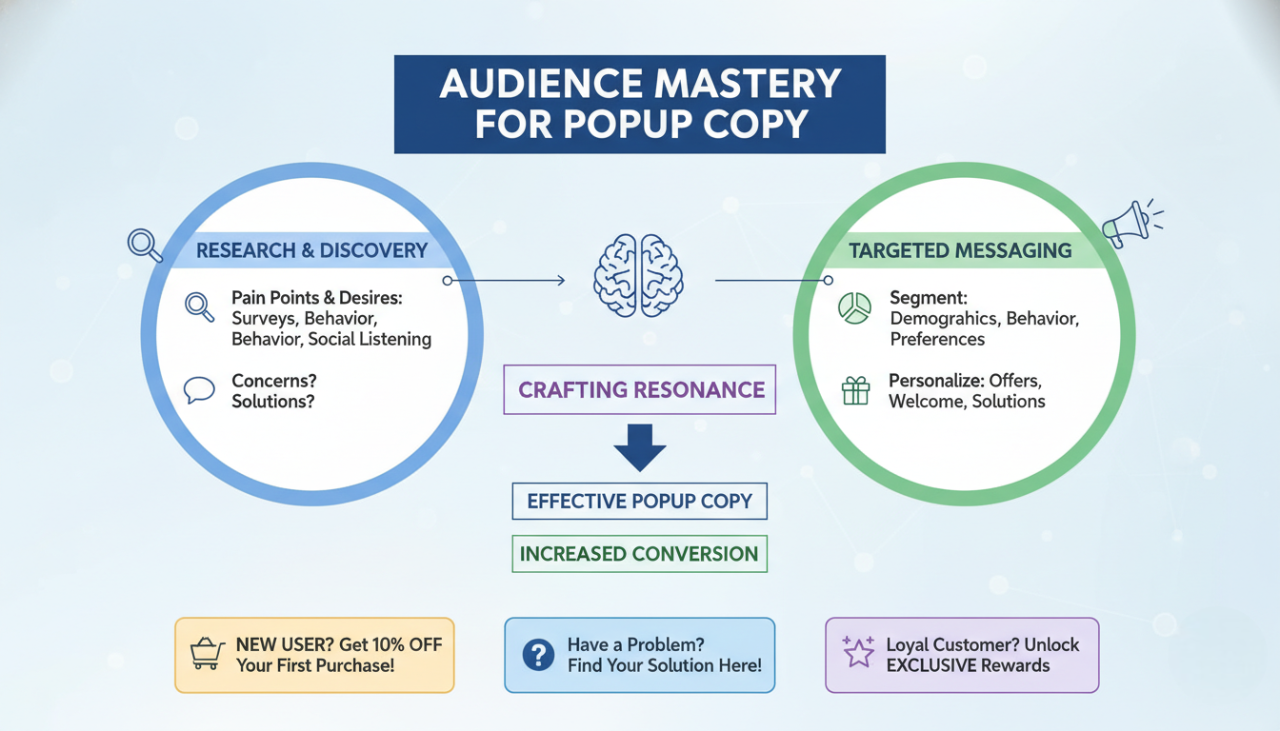
To create effective popup copy, it’s crucial to understand your audience deeply. This understanding forms the foundation upon which your messages will resonate and compel users to take action.
Researching Audience Pain Points
Identifying user needs and desires is the first step in crafting compelling popup copy. By conducting surveys, analyzing user behavior, and engaging with your audience through social media, you can uncover the challenges and interests that matter most to them.
What are their primary concerns?
What solutions are they seeking?
Once you grasp these pain points, you can tailor your messages to address them directly, making your popups more relevant and appealing.
Crafting Copy for Different Audience Segments
Not all visitors are the same, and customizing popups for targeted campaigns can yield better results. Here’s how to approach this:
Segment Your Audience: Divide your audience into groups based on demographics, behavior, or preferences.
Personalize Your Messages: Use language that speaks directly to each group. For example, if targeting first-time visitors, you might emphasize introductory offers or welcome discounts.
By delivering tailored messages, you not only increase engagement but also enhance the likelihood of conversion.
The Fundamentals of Effective Popup Copy ✍️
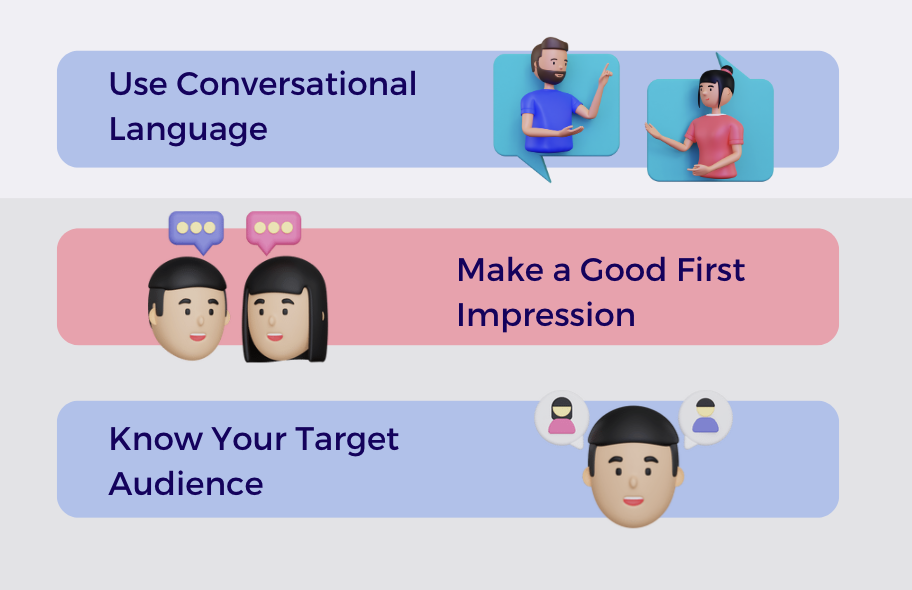
When it comes to popup copywriting, simplicity and clarity are paramount. This section will cover the essential elements that make popup copy effective, ensuring it resonates with your audience and drives them to take action.
Clarity is Key: Keep It Simple and Direct 🔑
The first rule of effective popup copy is to keep it straightforward. Users are often bombarded with information online, and your popup needs to stand out without overwhelming them.
Avoid Jargon and Complexity: Use simple, everyday language that anyone can understand. For instance, instead of saying, “Enhance your user experience with our state-of-the-art solutions,” you could say, “Get our easy-to-use tools for a better online experience.” This makes your message more accessible.
Creating a Strong Headline 💥
Your headline is the first thing users will see, so it must capture attention instantly.
How to Capture Attention Instantly: Use power words and phrases that evoke curiosity or urgency. Instead of a bland "Subscribe Now," consider "Unlock Exclusive Content!" This approach not only intrigues the user but also communicates value.
Crafting a Clear Call to Action (CTA) 🖱️
A well-defined Call to Action (CTA) is crucial for driving conversions. Your CTA should clearly instruct users on what you want them to do next.
Driving User Action with Persuasive CTAs: Use action-oriented language that motivates users to click. Phrases like “Join the Club” or “Claim Your Discount” are more engaging than generic options.
Examples of Effective CTAs:
| Action | Example CTA |
|---|---|
| Join | "Join Our VIP List!" |
| Save | "Grab 20% Off Today!" |
| Learn | "Discover More Here!" |
Types of Popups and Their Copy Requirements 📑
Popups come in various forms, each serving a distinct purpose in your marketing strategy. Understanding these types will help you craft tailored copy that resonates with your audience. Let’s dive into the different kinds of popups and the unique copy requirements for each.
Exit-Intent Popups: Last Chance to Convert 💼

Exit-intent popups are triggered when a user is about to leave your site. This is a critical moment where you can make a last-ditch effort to capture their attention and convert them before they go.
Writing for Urgency and FOMO: Use phrases that create urgency, like “Wait! Don’t miss out on 20% off your first purchase!” or “Before you go, get this exclusive offer!” Highlighting a limited-time deal or exclusive content can effectively leverage the Fear of Missing Out (FOMO) to encourage users to stay.
Scroll-Triggered Popups: Engage the Interested 👀

Scroll-triggered popups appear after a user has engaged with a specific portion of your content, indicating interest. This type of popup is ideal for catching users when they are most engaged.
Tailoring Content for Already Engaged Users: Craft your message to reflect their engagement level. For example, “Enjoying this article? Subscribe for more in-depth insights!” This approach feels less intrusive and more like a natural continuation of their experience.
Time-Delayed Popups: Strategic Timing ⏱️

Time-delayed popups appear after a user has spent a predetermined amount of time on your site. This method allows users to get a sense of your content before they are presented with an offer.
When to Introduce Offers or Subscriptions: Use this time to create a sense of anticipation. A simple message like, “Stay tuned! A special offer is coming your way in just a moment!” can pique interest without being overwhelming.
Click-Activated Popups: User-Initiated Engagement 👍

Click-activated popups are triggered when a user clicks on a specific element on your website, such as a button or a link. This type of interaction is beneficial because it shows active interest.
Supporting the Reader’s Journey with Smart Copy: Your copy should align with the user’s intention. If a user clicks on “Learn More,” your popup could say, “Great choice! Here’s an exclusive guide to dive deeper into this topic!” This approach reinforces their decision and encourages further engagement.
Writing High-Converting Popups 💬
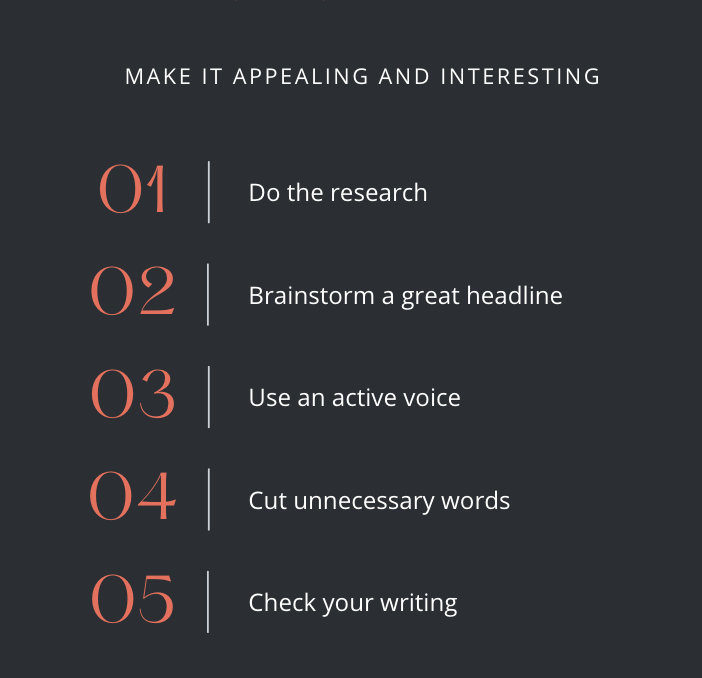
Crafting effective popup copy is essential for driving conversions and engaging your audience. This section will delve into key strategies for creating high-converting popups that resonate with users and prompt them to take action.
Hook Your Audience: The Power of First Impressions
Your popup’s first line is crucial. It determines whether users will engage with your message or dismiss it. Make it count! Here’s how to create a compelling first impression:
Use Strong, Actionable Language: Start with a bold statement or question that addresses your audience's needs. For example, “Ready to unlock exclusive insights?” or “Want to save money on your next purchase?”
Establish Relevance Quickly: Communicate the value of what you’re offering in a way that feels personalized. Example: “As a frequent visitor, you deserve a special 15% discount!”
Using Power Words to Drive Action 🔥
Incorporating power words in your popup copy can evoke strong emotions and spur users to act. Here are some effective power words to consider:
Exclusive: Conveys uniqueness and urgency (e.g., “Get your exclusive offer!”).
Free: Everyone loves free offers (e.g., “Claim your free guide today!”).
Instant: Suggests immediate results (e.g., “Get instant access to our secrets!”).
Using these words can create a sense of excitement and encourage users to engage with your popup.
The Role of Social Proof in Popups 👌
Building trust is essential for increasing conversions. Incorporating social proof into your popup can significantly enhance credibility:
Showcase Reviews or Testimonials: Add snippets of customer reviews or star ratings to your popups. Example: “Join over 1,000 happy customers who loved our products!”
Highlight Statistics: Use compelling statistics to back up your claims. For instance, “95% of users found our tips helpful!” This data reassures potential customers that they are making a wise choice.
Using Urgency and Scarcity Effectively ⏳
Urgency and scarcity are powerful psychological triggers that can drive conversions. Here’s how to use them in your popup copy:
Limited-Time Offers: Create urgency with phrases like “Hurry! Offer ends in 24 hours!” or “Only 5 items left in stock!” This encourages users to act quickly.
Countdown Timers: Visual countdown timers can be an effective way to emphasize urgency. Integrate a timer in your popup that counts down the time remaining for an offer.
Best Practices for A/B Testing Popup Copy 📊
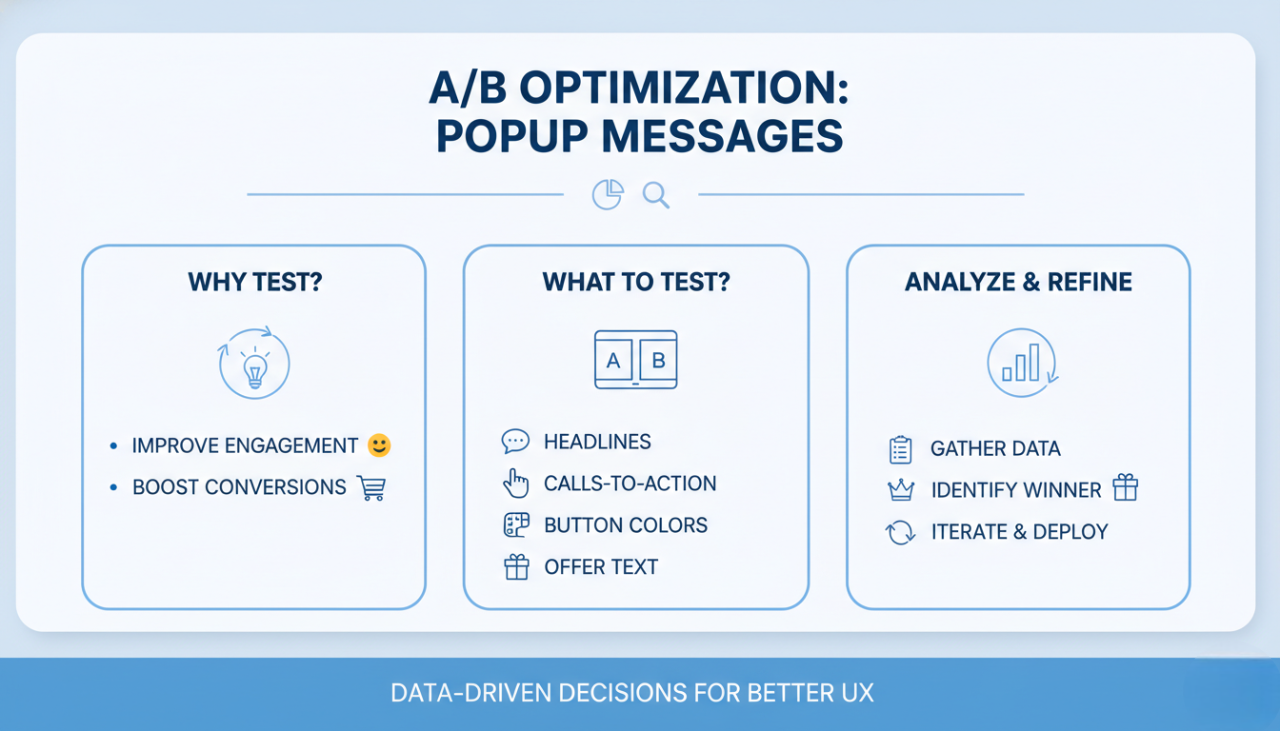
A/B testing is a crucial aspect of optimizing your popup copy for maximum effectiveness. It allows you to make data-driven decisions that can significantly enhance user engagement and conversion rates. In this section, we will cover why you should test your popup copy, what elements to test, and how to analyze your results for continuous improvement.
Why You Should Test Your Popup Copy 🧪
Testing your popup copy is essential for several reasons:
Identifies What Works: A/B testing helps you discover which variations of your copy resonate more with your audience, leading to higher conversions.
Reduces Guesswork: Instead of relying on assumptions about what your audience prefers, testing provides concrete data to inform your decisions.
Maximizes ROI: By continuously optimizing your popups based on testing results, you can enhance your marketing efforts, thereby maximizing your return on investment.
What to Test: Headlines, CTAs, and Offers 📝
When A/B testing your popup copy, focus on the following key elements:
Headlines: Test different headlines to see which one captures attention and drives engagement. Example: Compare “Get Your Free E-Book!” versus “Unlock Exclusive Insights with Our Free Guide!”
Call-to-Action (CTA): Experiment with different CTA phrases to find out which one generates more clicks. For instance, “Sign Up Now!” versus “Get Started Today!”
Offers: Try varying the incentives you provide. For example, compare the effectiveness of a discount (“Save 15%”) against a free resource (“Download Your Free Guide”).
Writing Mobile-Friendly Popup Copy 📱

In today's digital landscape, mobile devices account for a significant portion of web traffic. As a result, creating popup copy that is optimized for mobile users is crucial for maintaining engagement and ensuring conversions. In this section, we'll explore strategies for optimizing your popup copy for smaller screens and discuss how to avoid intrusive experiences that can lead to high bounce rates.
Optimizing Copy for Smaller Screens
When writing popup copy for mobile, consider the following key strategies:
Keep It Concise: Mobile users have limited screen space and often prefer quick, digestible information. Aim to keep your copy short and to the point.
Example: Instead of “Sign up to receive exclusive offers and updates directly in your inbox,” use “Get exclusive offers straight to your inbox!”
Use Legible Fonts: Choose fonts that are easy to read on smaller screens. Avoid overly decorative fonts that can hinder readability.
Strategic Use of White Space: Ensure your popups have ample white space around the text to prevent a cluttered look. This enhances readability and makes your message stand out.
Avoiding Intrusive Popups on Mobile Devices 🚫
Google has set guidelines to ensure a positive user experience on mobile, particularly concerning popups. Following these guidelines can help you avoid penalties and ensure your popups are user-friendly:
Display Timing: Avoid displaying popups immediately upon page load. Instead, consider time-delayed popups or scroll-triggered popups that engage users after they’ve had a chance to explore your content.
Size Matters: Ensure your popups do not cover the entire screen. Instead, aim for smaller popups that are easy to close and do not block critical content.
Use Close Buttons: Always include a prominent close button so users can dismiss the popup effortlessly. A frustrating experience can lead to higher bounce rates.
Compliance with Google’s Guidelines: Familiarize yourself with Google’s mobile popup policy. Avoid using popups that significantly interfere with user interaction, as these may lead to lower rankings in search results.
Common Mistakes in Popup Copywriting ❌
Creating effective popups can be challenging, and many marketers fall into common traps that can lead to poor performance and user frustration. In this section, we’ll highlight some of the most prevalent mistakes in popup copywriting and provide actionable tips to avoid them.
Overloading with Information
One of the biggest mistakes marketers make is trying to communicate too much in a single popup. This can overwhelm users and lead to quick dismissals.
Why Less Is More in Popups: The key to an effective popup is clarity. Users should be able to understand your message at a glance. If they need to read multiple lines of text, they may lose interest before even reaching your call to action.
Tip: Aim for a single, compelling message that highlights the benefit to the user. For example, instead of listing multiple offers, focus on one: "Join our newsletter for 10% off your first order!"
| Common Mistake | Avoid This | Better Approach |
|---|---|---|
| Overloading Information | “Get 20% off, plus exclusive updates, and access to members-only content!” | “Get 20% off your first purchase!” |
Weak or Confusing CTAs
A weak call to action (CTA) can render your popup ineffective. If users don't clearly understand what action to take, they’re less likely to engage.
How to Avoid Ambiguous Calls to Action: Be direct and persuasive in your CTA. Instead of using generic phrases like “Click here,” try more specific actions like “Claim your discount” or “Join the community!”
Tip: Use action-oriented language that conveys urgency. Phrases like “Limited time offer!” or “Join today!” encourage immediate action.
Neglecting Audience Relevance
Failing to tailor your popup copy to your target audience can lead to irrelevance. When users feel that the popup doesn't speak to their needs, they're more likely to dismiss it.
Focusing on Copy That Speaks to User Intent: Understanding your audience's needs, desires, and pain points is crucial for crafting relevant popup copy.
Tip: Segment your audience and create different popups tailored to each group. For instance, a popup for first-time visitors could offer a discount, while a popup for returning customers might invite them to join a loyalty program.
How to Align Popup Copy with Your Brand Voice 🎨
Ensuring your popup copy aligns with your brand voice is crucial for creating a cohesive user experience. When your popups resonate with your overall branding, they enhance trust and credibility, making users more likely to engage. In this section, we’ll explore how to maintain consistency across all touchpoints and personalize your popup copy for better engagement.
Maintaining Consistency Across Touchpoints
Consistency in messaging helps solidify your brand identity and assures users that they are interacting with a unified entity. Here’s how to achieve that:
The Role of Tone and Style in Branding: Your popup copy should reflect your brand’s personality. Whether your brand is professional, casual, humorous, or friendly, the tone of your popups should match.
Tip: Develop a style guide that includes your brand’s tone, preferred vocabulary, and key messaging points. This will help keep all communications, including popups, consistent.
Examples of Brand Voice Consistency:
Casual Brand: “Hey there! Grab your 15% off just for signing up!”
Professional Brand: “Subscribe to receive a 15% discount on your first purchase.”
Personalizing Your Popup Copy ✉️
Adding a human touch to your popup copy can significantly boost engagement. When users feel a personal connection to your brand, they’re more likely to convert.
Using Personalization Strategies: Leverage user data to customize your popups. You can create different versions based on user behavior, preferences, or demographics.
Tip: If a user has previously visited your site but didn’t make a purchase, consider a targeted popup like, “We noticed you liked our products! Here’s a 10% discount just for you!”
Incorporating Dynamic Content: Dynamic popups that change based on user interactions can create a more tailored experience. For instance, you could display different offers based on what products users have viewed.
Advanced Popup Copywriting Techniques 💡
To truly excel in popup copywriting, you need to go beyond the basics and implement advanced techniques that engage users on a deeper level. This section will cover how to use emotional triggers effectively and the innovative approach of gamification in popups.
Using Emotional Triggers in Your Copy 😢
Emotions play a significant role in decision-making, and tapping into them can significantly enhance the effectiveness of your popups. By appealing to users' feelings, you can drive conversions more effectively. Here’s how to do it:
Identify Core Emotions: Understand the emotions that resonate with your target audience. Common emotional triggers include fear, joy, surprise, and trust. For example:
Fear: “Don’t miss out! Only 2 items left in stock!”
Joy: “You’re just one step away from enjoying your exclusive discount!”
Crafting Emotional Copy: Use storytelling and relatable scenarios to evoke emotions. This could be a brief narrative or a relatable situation that reflects your audience’s experiences.
Example: “Imagine sipping your favorite drink from our custom mug every morning. Subscribe for 10% off your first order and make it a reality!”
Visual Elements: Pair your emotional copy with compelling visuals or images that reinforce the sentiment. For example, a joyful image of a customer using your product can amplify feelings of happiness and encourage sign-ups.
Leveraging Gamification in Popups 🎮
Gamification is an engaging way to encourage interaction by incorporating game-like elements into your popups. This strategy can enhance user experience and motivate users to take action. Here’s how to implement it:
Introduce Interactive Elements: Use quizzes, spin-the-wheel promotions, or scratch-off coupons to create a fun user experience.
Example: “Spin the wheel to win exclusive discounts!” This approach invites users to engage and adds an element of excitement.
Rewarding Users: Offer tangible rewards for participating in the gamified experience. This could range from discounts to exclusive content, making users feel valued and appreciated.
Tip: Clearly communicate the benefits of participating. For instance, “Join our fun quiz and receive 20% off your next purchase!”
Encouraging Sharing: Design gamified popups that encourage users to share their experience on social media for added rewards. This not only enhances engagement but also extends your reach.
FAQs
What is the ideal length for popup copy?
The ideal length for popup copy is generally between three to five lines. This keeps the message short and concise, allowing you to capture attention quickly without overwhelming users with too much information.
How can I write popup copy that’s not annoying?
To avoid annoying users, focus on providing value with your offer, use appropriate triggers like exit-intent or scroll-based popups, and keep the content minimal and straightforward. This helps create a positive user experience.
What is the best type of CTA for popups?
The best type of call-to-action for popups is one that is action-oriented and specific. Phrases like “Get Your Free Guide” or “Claim Your Discount Now” encourage immediate action and are effective at driving conversions.
How often should I A/B test my popup copy?
You should A/B test your popup copy every few weeks or after making significant changes. This allows you to stay aligned with user preferences and continuously improve conversion rates.


